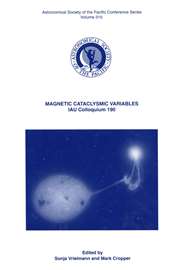Article contents
Spectroscopic Techniques in X-Ray Astronomy
Published online by Cambridge University Press: 12 April 2016
Extract
The catalog of X-ray sources now includes types I and II super-novae remnants, at least one pulsar, other periodic or quasi-periodic sources, starlike objects which emit primarily in X rays, normal galaxies, radio galaxies, Seyfert galaxies, a quasar, and an apparently isotropic extragalactic background. There is ample evidence that X-ray emission is characteristic of many of the most interesting objects in astronomy, and the background may have cosmological implications. This should not be too surprising, since significant X-ray emission occurs whenever high energy electrons interact, and high energy electron production is usually associated with explosive phenomena.
The most useful energy range for X-ray observations extends from about 200 eV to perhaps 10 keV. The low energy limit results from the absorption by the interstellar media, which of course varies from object to object; some typical cutoffs are given in Table I. The high energy limit, which is much more arbitrary, results from the usually observed rapidly decreasing emission with increasing energy, and also from the lack of important characteristic emission or absorption features above this energy range. In many cases, however, observations outside of this energy range are required to definitively identify a dominant source mechanism.
Information
- Type
- Section VI / Spectra of Cosmic X-Ray Sources
- Information
- Copyright
- Copyright © Reidel 1972
References
- 2
- Cited by

